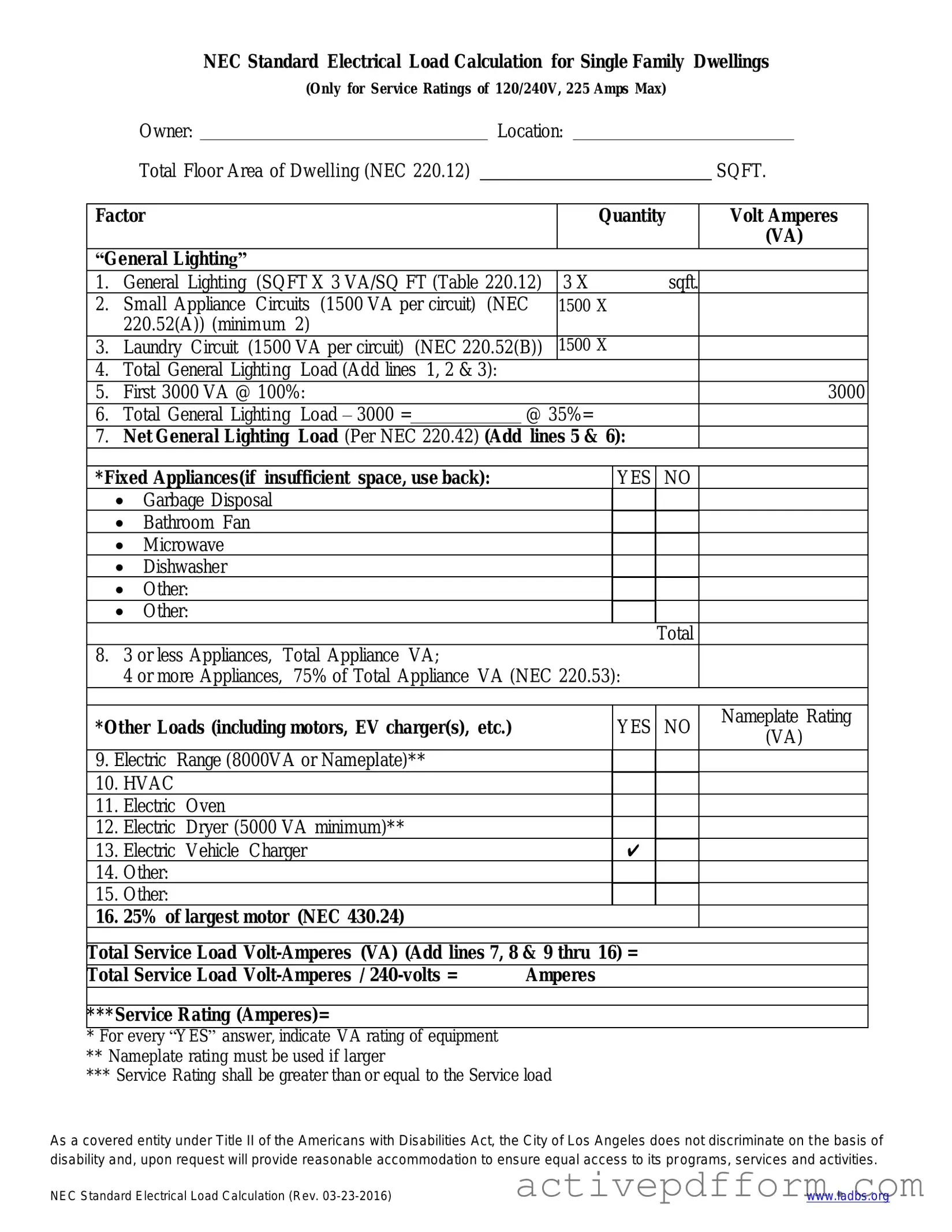What is the LADBS NEC Standard Electrical Load Calculation form?
The LADBS NEC Standard Electrical Load Calculation form is a document used to determine the electrical load requirements for buildings and structures. It helps ensure that electrical systems are designed safely and effectively, meeting the National Electrical Code (NEC) standards.
Who needs to fill out this form?
This form is typically filled out by electrical engineers, contractors, or anyone involved in the design and installation of electrical systems. It is essential for obtaining permits and ensuring compliance with local regulations.
What information is required on the form?
The form requires details such as the type of occupancy, the square footage of the building, the number of electrical appliances, and their respective loads. It may also ask for information about lighting, heating, and cooling systems.
How is the electrical load calculated?
Electrical load is calculated by adding up the wattage of all devices and systems that will be used in the building. This includes lighting, outlets, HVAC systems, and any other electrical equipment. The total load helps determine the size of the electrical service needed.
Why is it important to accurately calculate electrical load?
Accurate load calculations are crucial for safety and efficiency. An undersized electrical system can lead to overheating, tripped breakers, and potential fire hazards. Conversely, an oversized system can be wasteful and expensive. Proper calculations help strike a balance.
What happens if the form is not submitted?
If the form is not submitted, it can delay the permit approval process. Without the necessary permits, construction or renovation work may be halted, leading to increased costs and project timelines. Compliance with local regulations is essential.
Can I use a previous version of the form?
It is recommended to use the most current version of the form to ensure compliance with the latest codes and regulations. Using an outdated version may lead to errors in calculations or issues with permit approvals.
Is there a deadline for submitting the form?
While specific deadlines can vary by project and jurisdiction, it is best to submit the form as early as possible in the planning process. This allows for any necessary revisions and ensures that the project stays on schedule.
Where can I find the LADBS NEC Standard Electrical Load Calculation form?
The form can typically be found on the Los Angeles Department of Building and Safety (LADBS) website. It is also available at their offices. Make sure to download the latest version to ensure compliance.
Who can I contact if I have questions about the form?
If you have questions about the form or the load calculation process, you can contact the LADBS directly. They provide resources and assistance to help you navigate the requirements and ensure your project meets all necessary standards.

